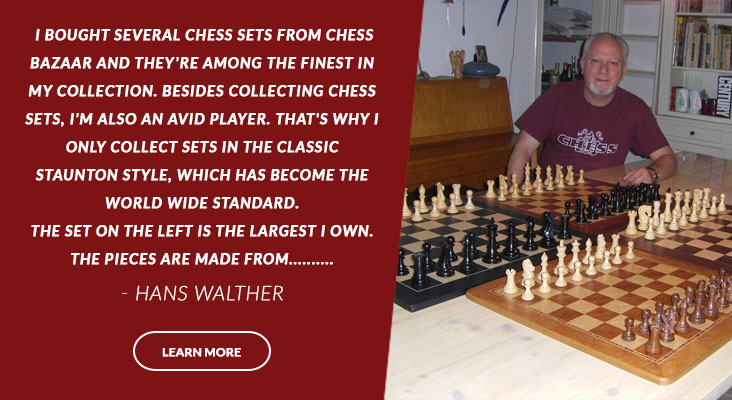In a game of chess, there are six different chess pieces or chessmen used on chessboards. These are King, Queen, Bishop, Knight, Rook, and Pawn. On a chessboard, a chess player starts playing with 16 pieces of chessmen either with white sides of pieces or black(dark) side of pieces. Every rated game contains 1 each extra pair of queen for pawn promotion. Even the chess equipments which are used is a standard tournament chess set approved by FIDE.
King Movement
The king, without any doubt, is the most important piece in chess. The purpose of the game is to capture the opponent’s king so that its escape becomes impossible, which is also called “checkmate” in chess term. If an opponent’s king is threatened with capture, it is said to be in check, and the player must remove the threat of capture on the next move. If this cannot be done, the king is said to be in checkmate. Although the king is the most important piece, it is also one of the weakest pieces in the game.
This must be taken into consideration that white always starts with the king on the first rank to the right of the queen. Black stands directly opposite to the 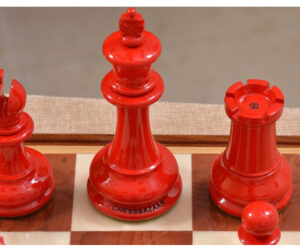 white’s king. With the squares labeled as in algebraic notation, the white king starts on e1 and black on e8. As shown in the diagram below, the king can move only one square in any direction. An interesting point to note about this rule is that two kings can never stand next to each other or capture each other. Though a king may be, and often are, used to help to checkmate the opposing king by guarding squares. The moment of King is generally described by the letter K.
white’s king. With the squares labeled as in algebraic notation, the white king starts on e1 and black on e8. As shown in the diagram below, the king can move only one square in any direction. An interesting point to note about this rule is that two kings can never stand next to each other or capture each other. Though a king may be, and often are, used to help to checkmate the opposing king by guarding squares. The moment of King is generally described by the letter K.
Queen Movement
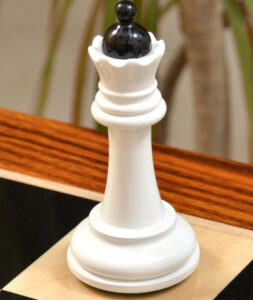 The Queen is, without a doubt, the most powerful piece on the chessboard. She can move with the combination of both bishop and rook in any direction (barring any obstruction). In the diagram below, the green dots indicate the squares the queen may move. She can cover 27 squares. This is a healthy percentage of the board, 42 percent.
The Queen is, without a doubt, the most powerful piece on the chessboard. She can move with the combination of both bishop and rook in any direction (barring any obstruction). In the diagram below, the green dots indicate the squares the queen may move. She can cover 27 squares. This is a healthy percentage of the board, 42 percent.
This is a reason that in almost every chess game, the pawn is promoted to a queen. In a chessboard, a white queen sits on a white square and the black queen starts on a black square.
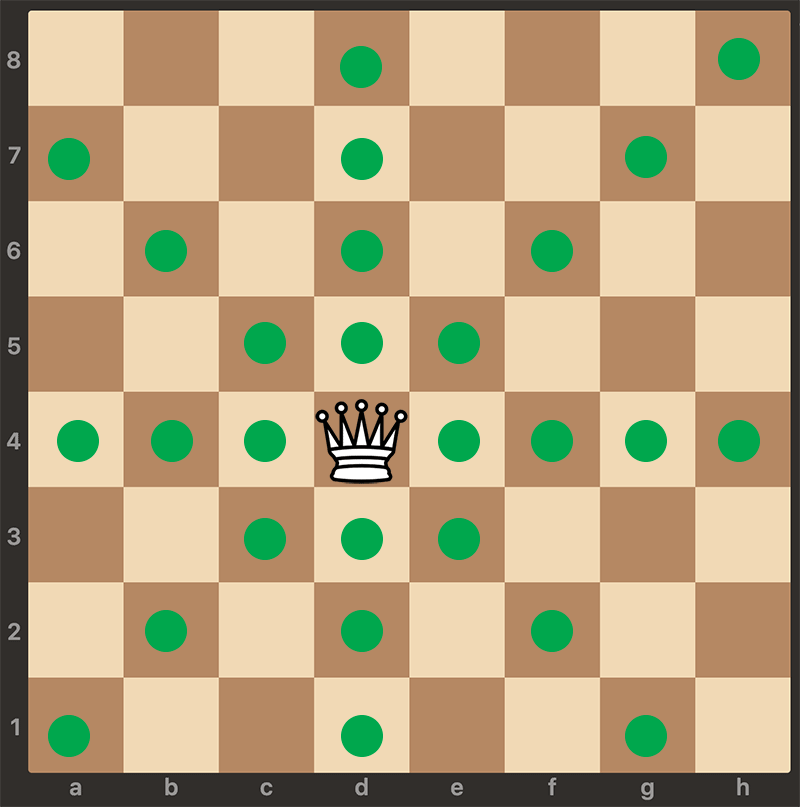
The Queen is described by Q. In algebraic notation, the white Queen starts on d1 and the black queen starts on d8. The queen can be moved in any number of unoccupied squares, expect Knight’s move, in vertically, horizontally and diagonally.
Bishop Movement
The bishop sits next to King and Queen in the chess game. It may move
any 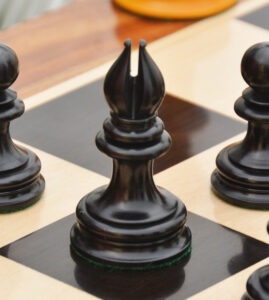 number of squares in a diagonal direction (barring any obstruction). Each player begins the game with two bishops, one on White Square and one on Dark Square. Because they move only diagonally, they always remain on the same colored squares.
number of squares in a diagonal direction (barring any obstruction). Each player begins the game with two bishops, one on White Square and one on Dark Square. Because they move only diagonally, they always remain on the same colored squares.
They may not jump over the pieces like a knight, but together they can cover a large area and can limit the opponent’s movement.
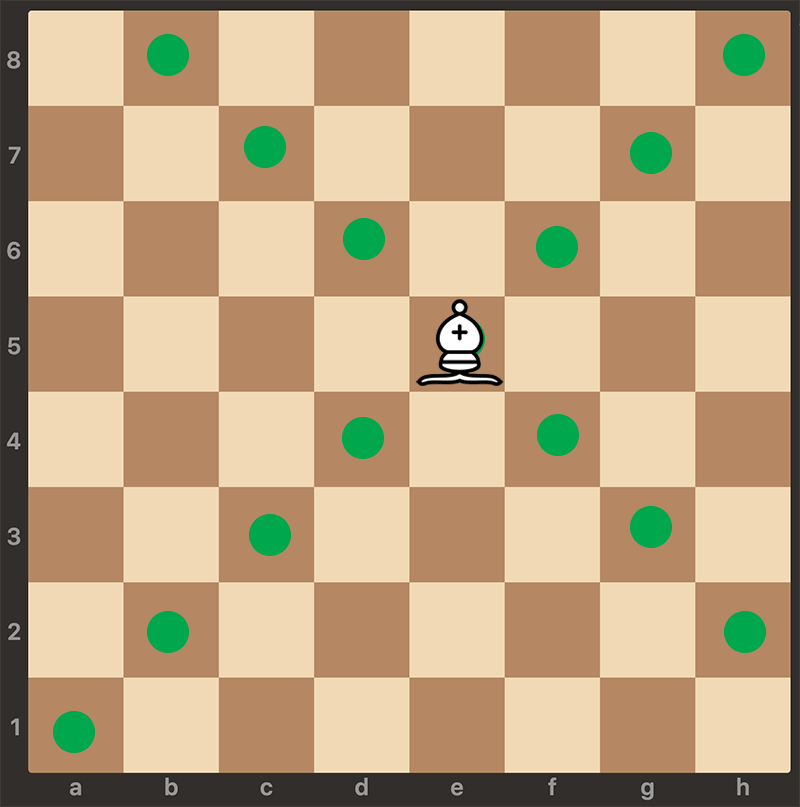
Related: How to Make the Best Chess Opening Moves?
The Bishop is generally described by B. In algebraic notation, the starting squares are c1 and f1 for white bishops and c8 and f8 for black bishops.
Knight Movement
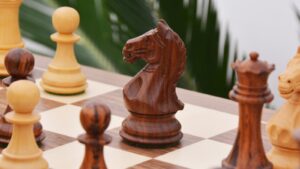 The knight in the game is generally represented by a horse’s torso. Unlike any of the chess pieces in the game, the knight may jump over other pieces. This gives it a degree of flexibility and makes it a powerful piece especially in a game where the board is cluttered with the pieces. Each chess player starts with the two knights each one on the different squares. In the diagram below, the yellow dots are the opponent’s pieces which are being passed over and the green dots are the squares where the knight may move or captures the opponent’s piece)
The knight in the game is generally represented by a horse’s torso. Unlike any of the chess pieces in the game, the knight may jump over other pieces. This gives it a degree of flexibility and makes it a powerful piece especially in a game where the board is cluttered with the pieces. Each chess player starts with the two knights each one on the different squares. In the diagram below, the yellow dots are the opponent’s pieces which are being passed over and the green dots are the squares where the knight may move or captures the opponent’s piece)
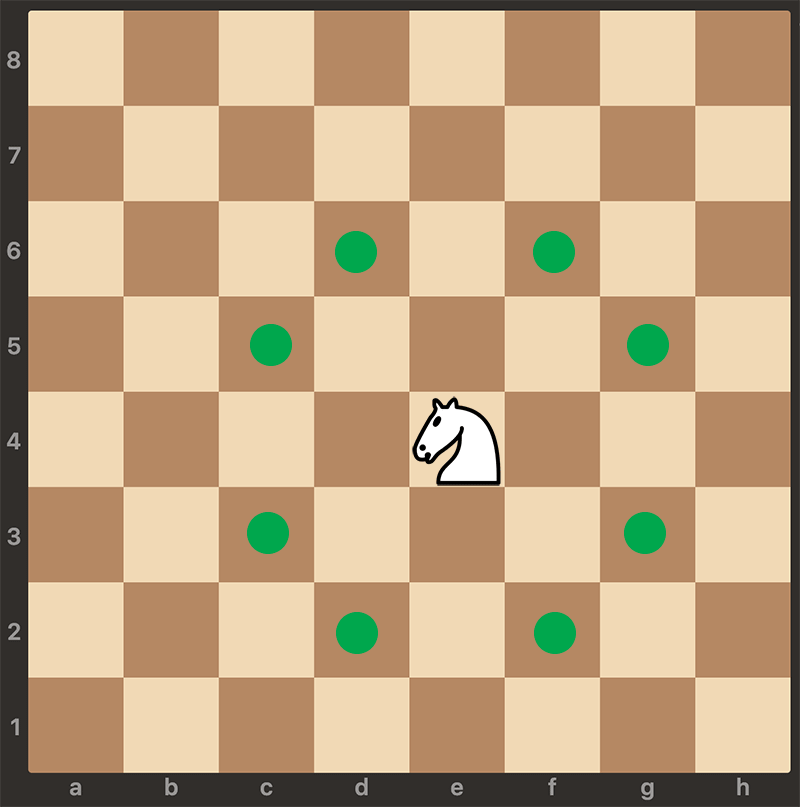
Letter N generally describes the Knight. Some early Staunton sets come with Kingside Knight stamping as it becomes easy for the players to distinguish between two knights as these pieces can move to any squares, unlike bishops. Though, the value of the Knight is equivalent to the bishop i.e 3. The knight’s movement can also be viewed as “L” laid out at any horizontal or vertical angle. In algebraic notation, the starting squares of Knights are b1 and g1 for white side and b8 and g8 for black knights.
Related: All you Need to Know about En Passant Move
Rook Movement
The rook, mostly shaped like castle or towers, is among the powerful pieces on the board. The value of the rook is 5, more than bishop and knight and only after the Queen. The rook can be worth a bishop/knight and two pawns. The rook can move any number of squares (barring any obstruction) in a straight line along any row or column. As shown in the diagram below, the rook can move or capture in any square that has green dots.
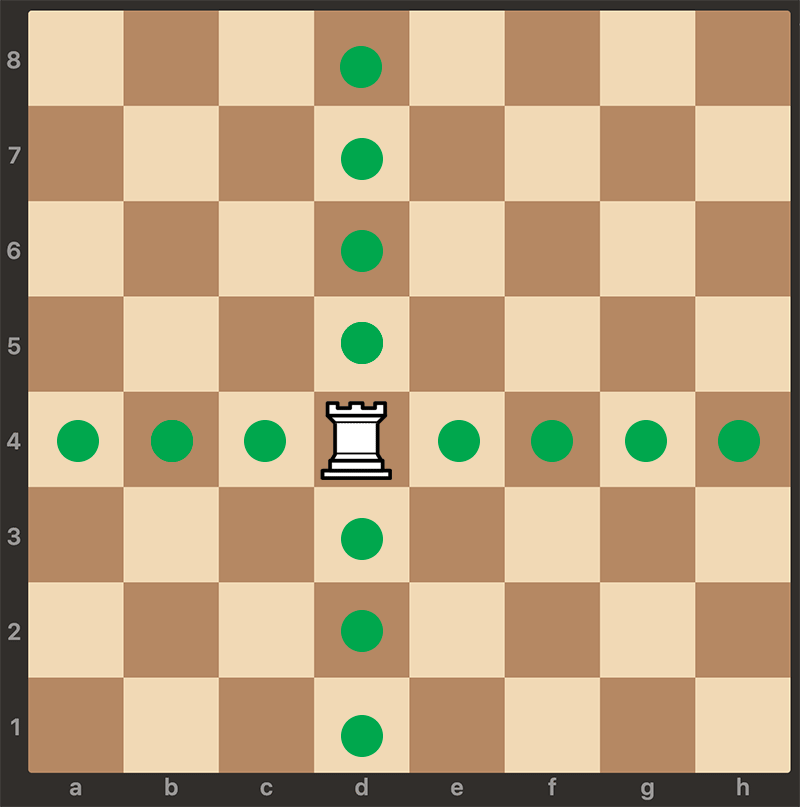
Related: Now Make Double Chess Moves with Marseillais Chess
R generally describes the rooks. The rooks also come in Kingside stamping in early pre-Staunton sets so that players can easily distinguish between these two. In algebraic notation, the white rook starts on a1 and h1 and dark rook starts on a8 and h8. The rooks may move horizontally or vertically. The rook also participates, with a king, also known as castling. Know more about castling>
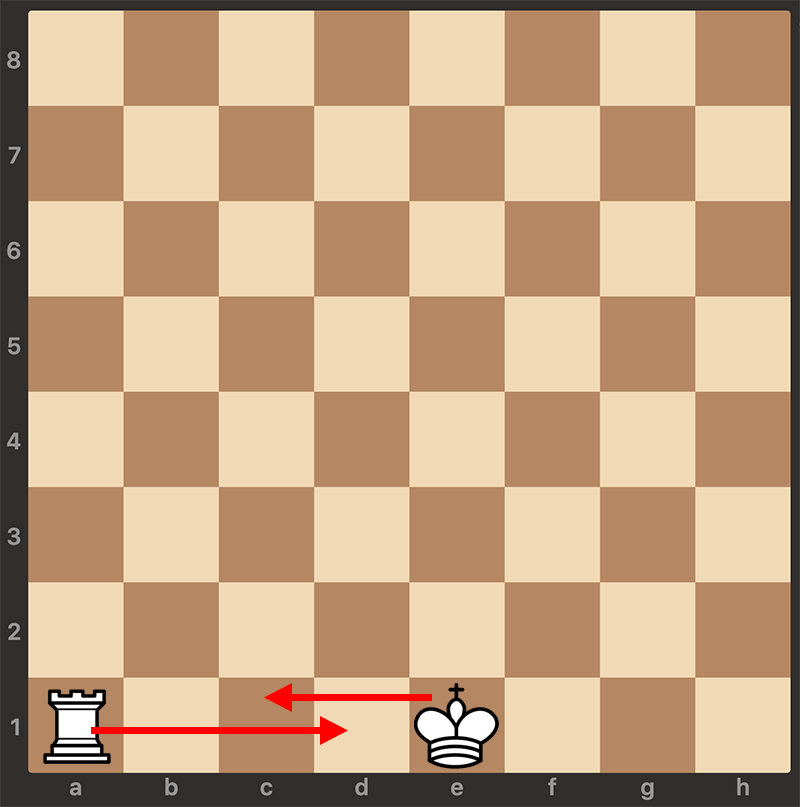
Pawn Movement
In a chess game, players start with eight pawns on either side. These are one of the weakest pieces in the chess game and their value is 1, though they have the potential to become the Queen if a pawn reaches to the opponent’s main squares, i.e. a2 reaches a8. Pawns cannot move diagonally or backward, but they move straight ahead unless they are taking another piece where they can change their column.
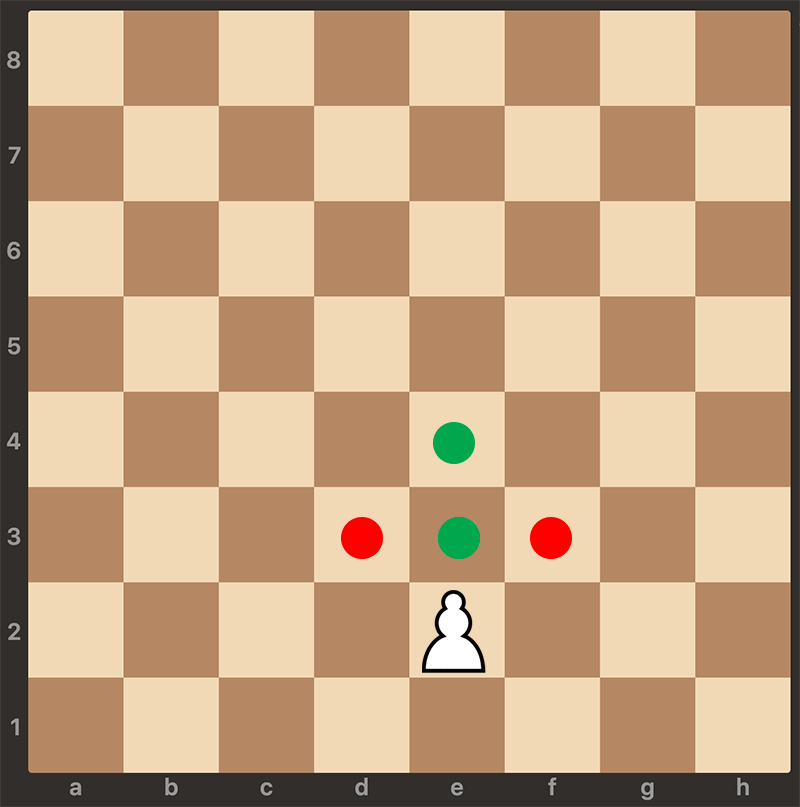
The pawns are generally described by P. In algebraic notation, the white pawn starts on a2, b2, c2, …., h2, while dark pawns start on a7, b7, c7, …. , h7. Generally, pawns move only one square, however, the exception is the first time is that when a pawn is moved, it may move two squares forward provided there are no obstruction pieces. All eight pawns can move two squares when sitting on their original positions. In the diagram, the green dots show where the pawn may move, and the red dots show where the pawn may capture the piece.
Read More: My Journey as a Chess Collector by Stephen Kong (Chess Praxis)
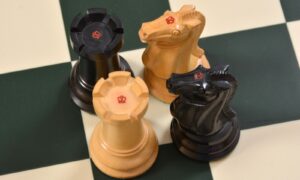
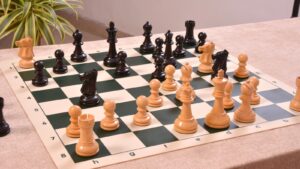
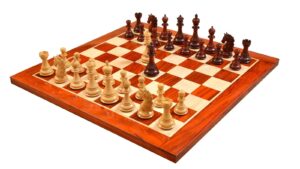

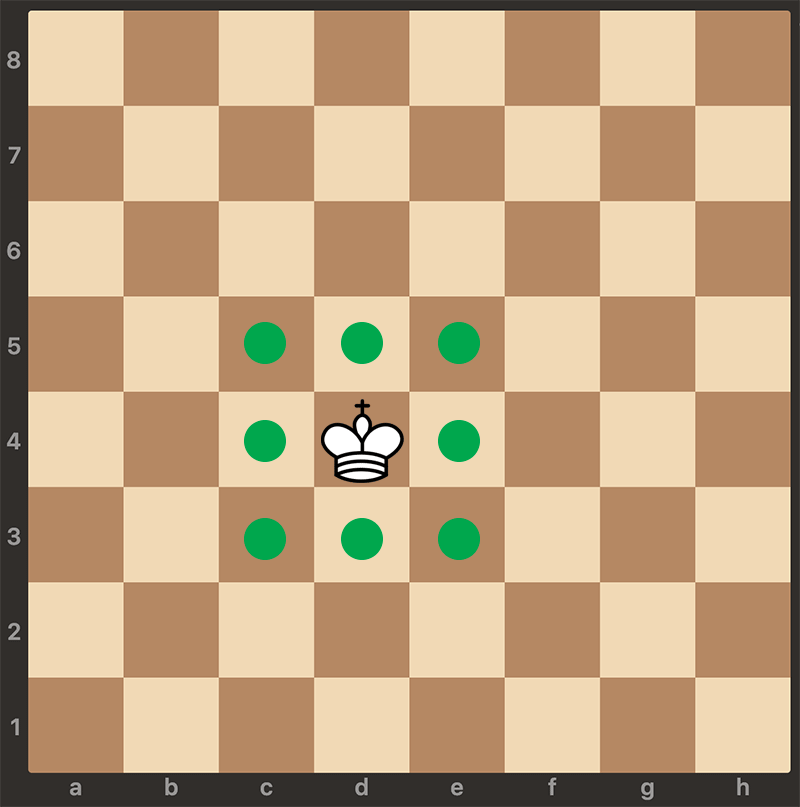
 white’s king. With the squares labeled as in algebraic notation, the white king starts on e1 and black on e8. As shown in the diagram below, the king can move only one square in any direction. An interesting point to note about this rule is that two kings can never stand next to each other or capture each other. Though a king may be, and often are, used to help to checkmate the opposing king by guarding squares. The moment of King is generally described by the letter K.
white’s king. With the squares labeled as in algebraic notation, the white king starts on e1 and black on e8. As shown in the diagram below, the king can move only one square in any direction. An interesting point to note about this rule is that two kings can never stand next to each other or capture each other. Though a king may be, and often are, used to help to checkmate the opposing king by guarding squares. The moment of King is generally described by the letter K. The Queen is, without a doubt, the most powerful piece on the chessboard. She can move with the combination of both bishop and rook in any direction (barring any obstruction). In the diagram below, the green dots indicate the squares the queen may move. She can cover 27 squares. This is a healthy percentage of the board, 42 percent.
The Queen is, without a doubt, the most powerful piece on the chessboard. She can move with the combination of both bishop and rook in any direction (barring any obstruction). In the diagram below, the green dots indicate the squares the queen may move. She can cover 27 squares. This is a healthy percentage of the board, 42 percent.
 number of squares in a diagonal direction (barring any obstruction). Each player begins the game with two bishops, one on White Square and one on Dark Square. Because they move only diagonally, they always remain on the same colored squares.
number of squares in a diagonal direction (barring any obstruction). Each player begins the game with two bishops, one on White Square and one on Dark Square. Because they move only diagonally, they always remain on the same colored squares.





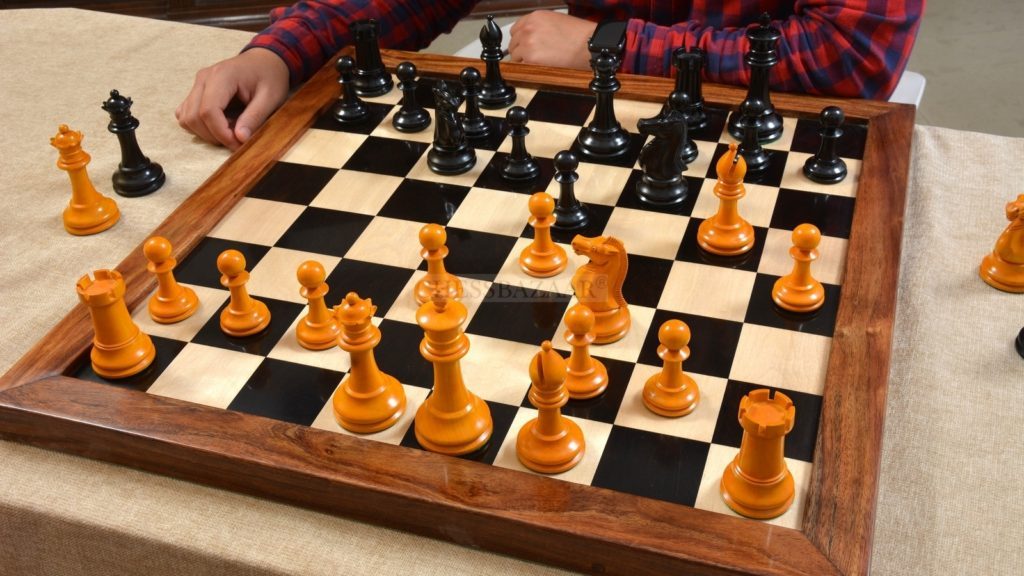
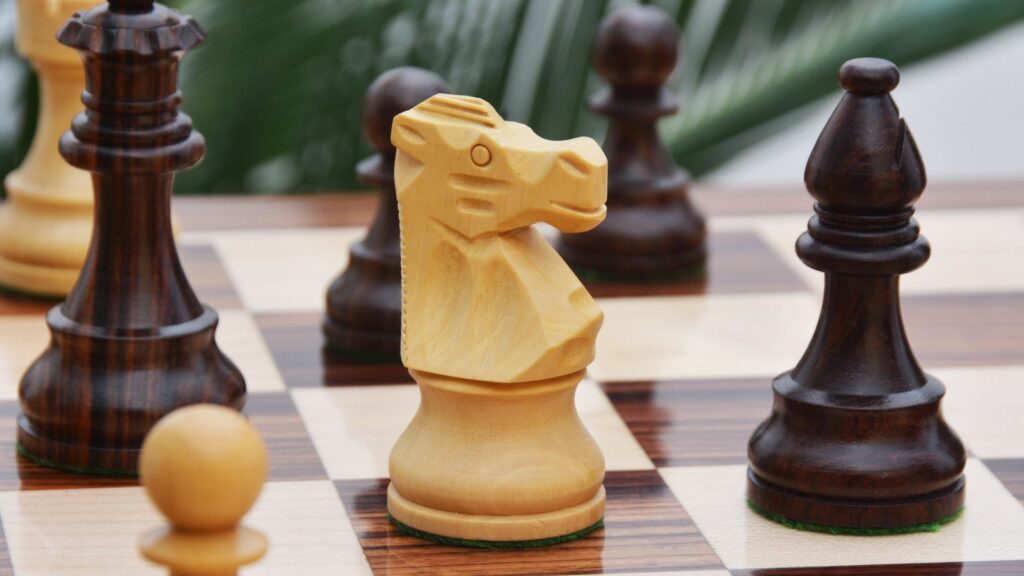
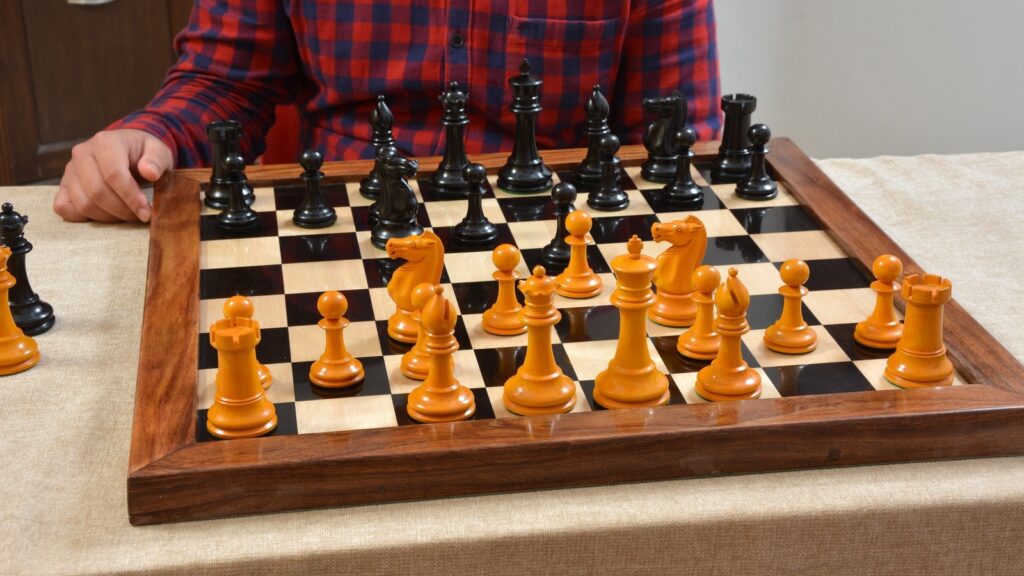
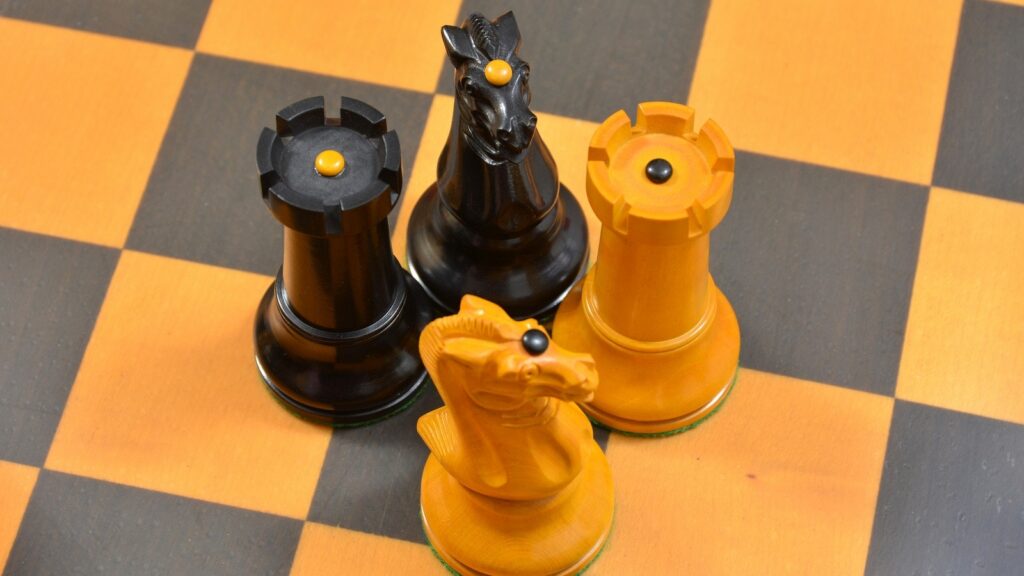
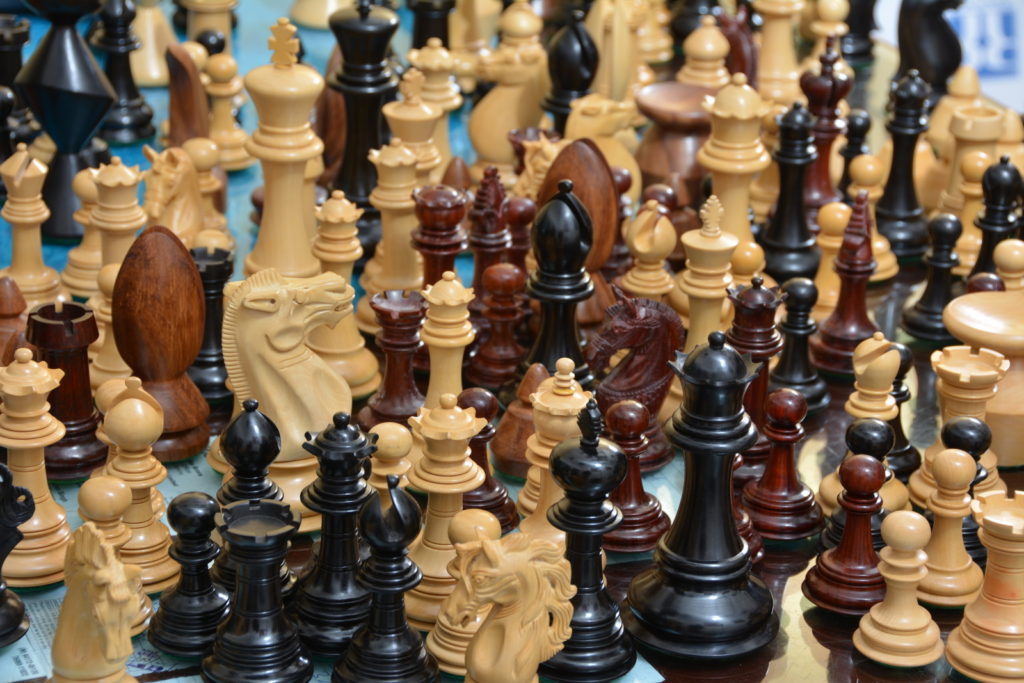
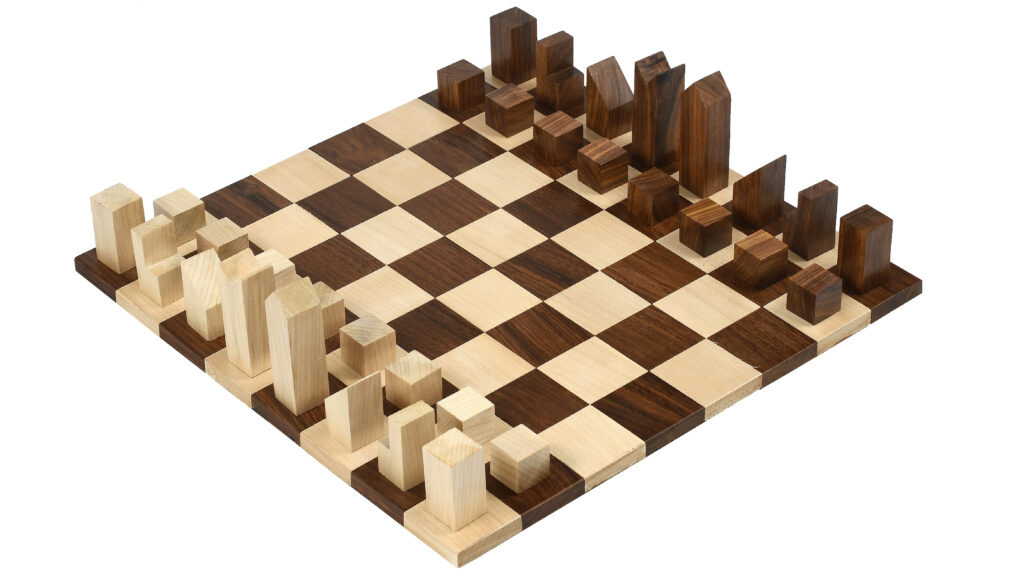
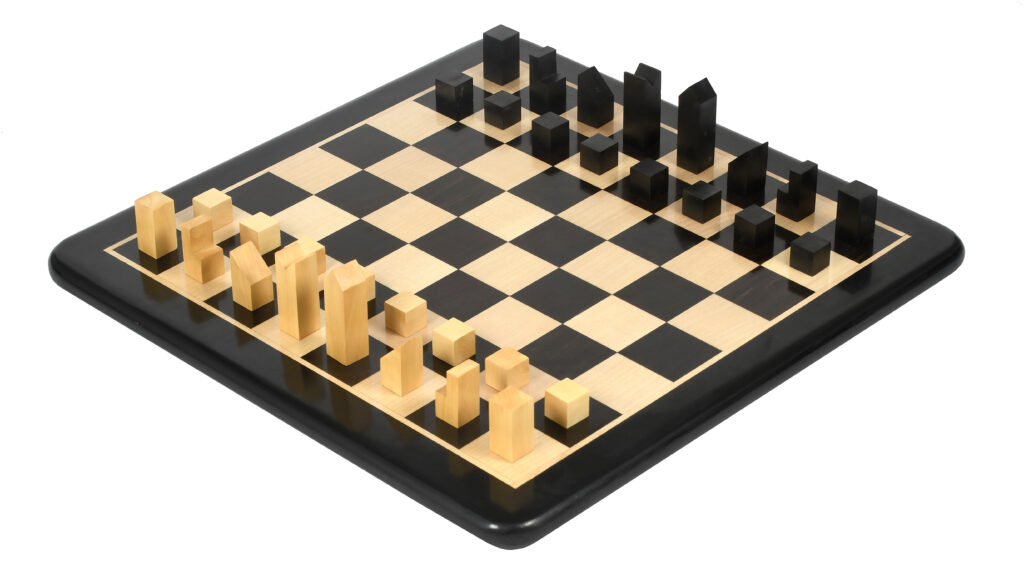
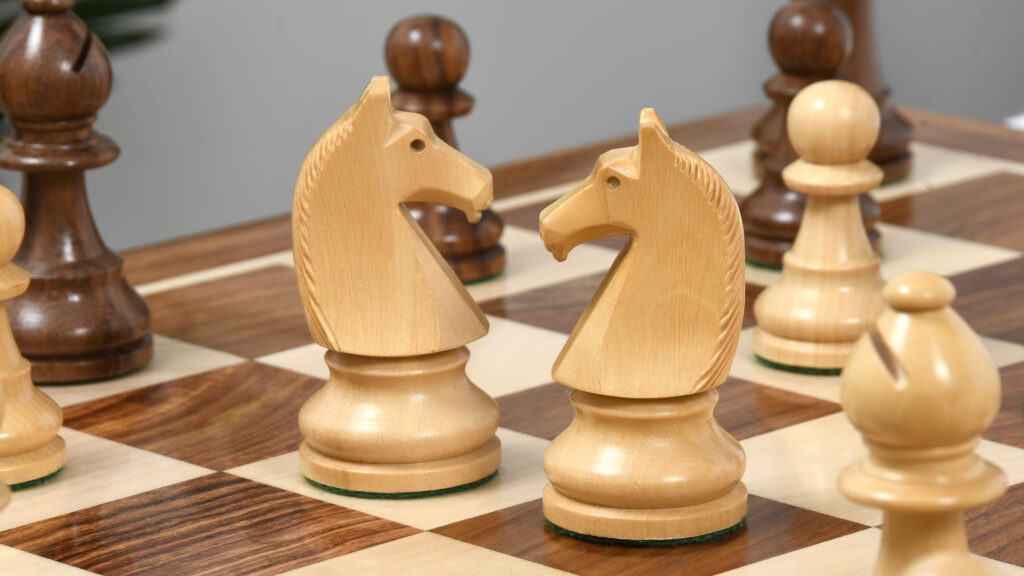
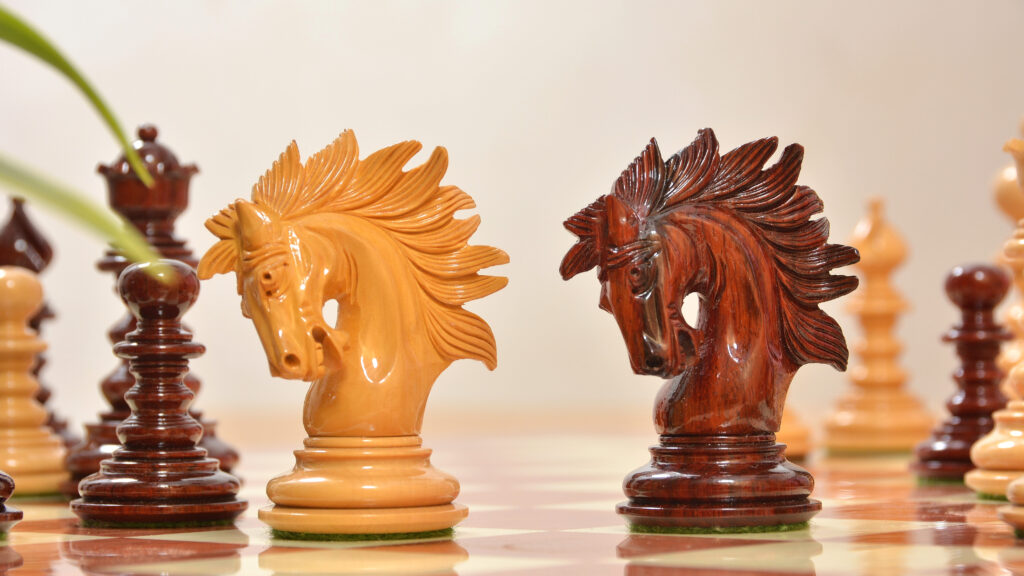
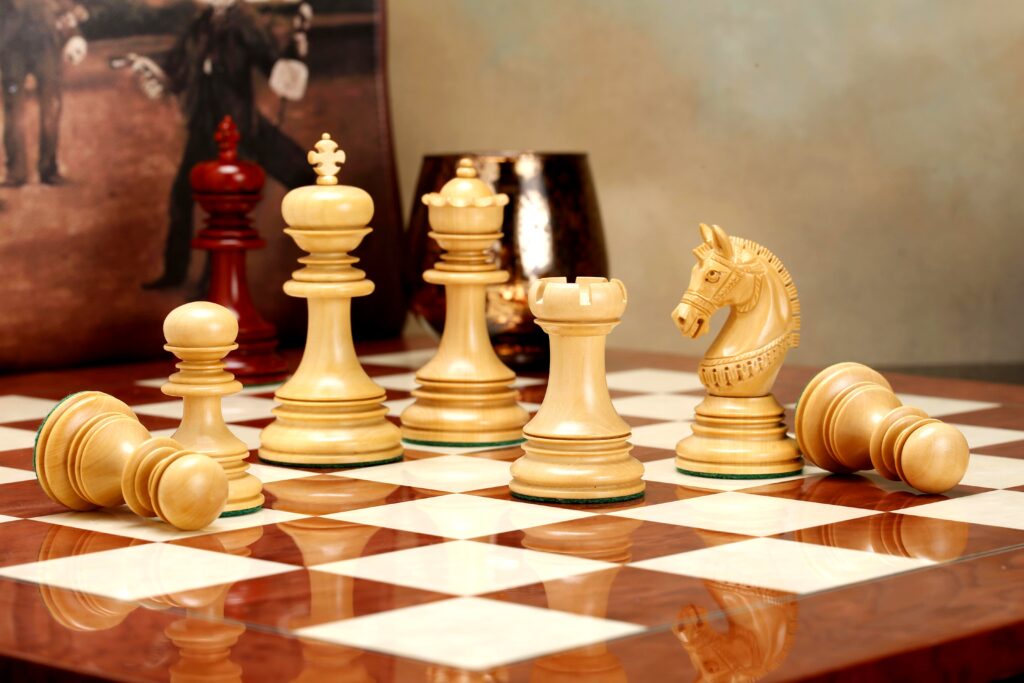
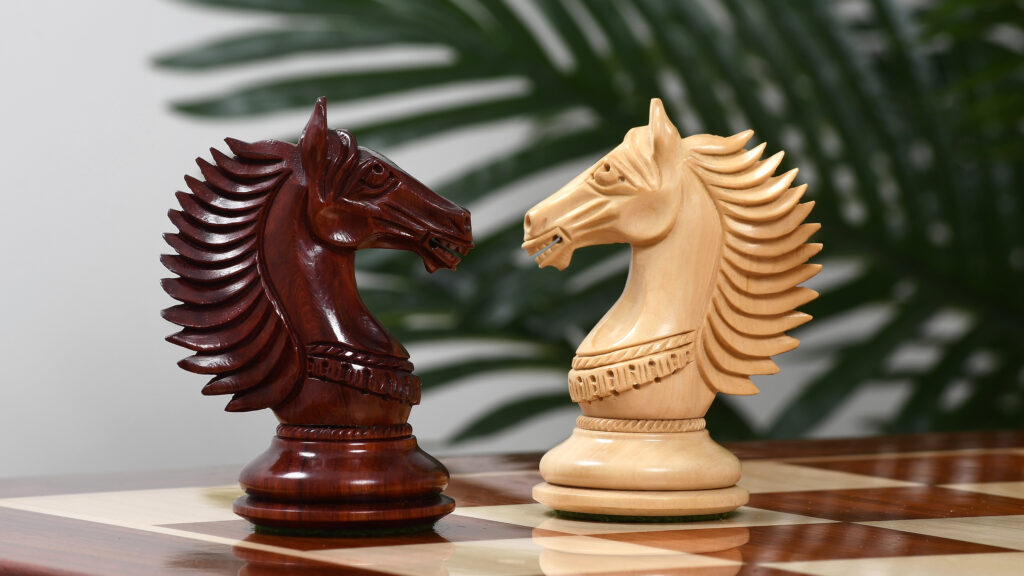
 Chess sets never come with an expiry date. The chess you bought today can be preserved by your great grand children in years to come making your collection an antique one. Wood chess was introduced to this world in the 18th century and still, we can find those antique and vintage chess collections in some museums or collectors. Some of the best-preserved chess set goes for thousands of dollars in auctions. For example, famous J. Jaques of London produced the first Staunton chess set in 1849. Hundred of chess sets were manufactured, however, only a few of them are left in good condition. On popular demand from our chess collector community, we bought the reproduction of 1849 to this world and have already sold over 100 chess sets.
Chess sets never come with an expiry date. The chess you bought today can be preserved by your great grand children in years to come making your collection an antique one. Wood chess was introduced to this world in the 18th century and still, we can find those antique and vintage chess collections in some museums or collectors. Some of the best-preserved chess set goes for thousands of dollars in auctions. For example, famous J. Jaques of London produced the first Staunton chess set in 1849. Hundred of chess sets were manufactured, however, only a few of them are left in good condition. On popular demand from our chess collector community, we bought the reproduction of 1849 to this world and have already sold over 100 chess sets.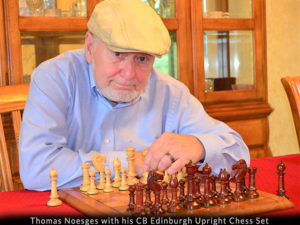 collectible item for future. Having said this, many other collectible chess comes in different types like a bone set, metal chess set, marble chess set which are not as collectible as the
collectible item for future. Having said this, many other collectible chess comes in different types like a bone set, metal chess set, marble chess set which are not as collectible as the 
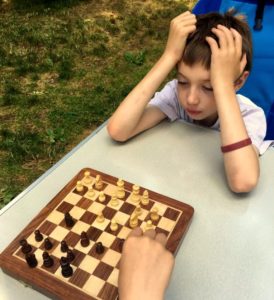 different sizes and can be easily fit in our pockets. Starting from 5” size chess box, it goes all the way up to
different sizes and can be easily fit in our pockets. Starting from 5” size chess box, it goes all the way up to 